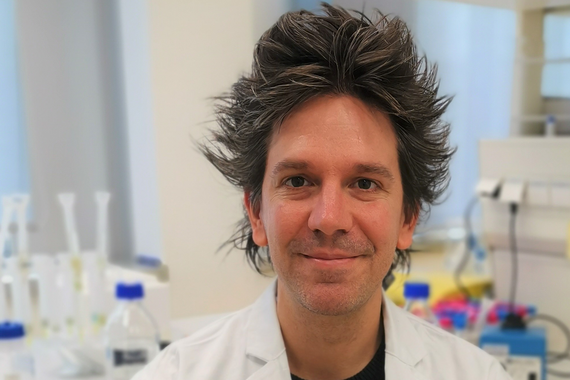-
Die Universität
- Herzlich willkommen
- Das sind wir
- Medien & PR
-
Studium
- Allgemein
- Studienangebot
- Campusleben
-
Forschung
- Profil
- Infrastruktur
- Kooperationen
- Services
-
Karriere
- Arbeitgeberin Med Uni Graz
- Potenziale
- Arbeitsumfeld
- Offene Stellen
-
Diagnostik
- Patient*innen
- Zuweiser*innen
-
Gesundheitsthemen
- Gesundheitsinfrastruktur
Deciphering the Transcription Factor - RNA binding Protein Axis in Health and Disease
Evidence accumulated over the past decade provides support for liquid–liquid phase separation (LLPS) as the mechanism underlying the formation of biomolecular condensates, which include not only ‘membraneless’ organelles such as nucleoli and RNA granules, but additional assemblies involved in transcription, translation and signaling. Understanding the molecular mechanisms of (patho)physiological condensate function critically requires knowledge of the dynamics and structures of their constituents. The PhD candidates of the Madl lab study the intricate network and regulation of multiple weak and transient protein-protein interactions within the axis connecting transcription factors and RNA binding proteins. Distortions of these interactions are a hallmark of many human diseases, such as cancers and neurodegeneration. The key interactions are explored through development of peptide-based inhibitors with potential application in therapies targeting age-related diseases.
To this end, the students of the Madl lab use a multi-disciplinary integrative structural biology, biophysical, computational, biochemical, and cell biological approach. Structural biology techniques include, but are not limited to NMR spectroscopy, SAXS, X-ray crystallography, and modeling. NMR spectroscopy is particularly powerful in this regard as it allows investigation of structure and dynamics involving weak and transient interactions.
Principle investigator
Professor
Tobias Madl
Tobias Madl
Gottfried Schatz Research Center
Molecular Biology and Biochemistry
T: +43 316 385 71972



